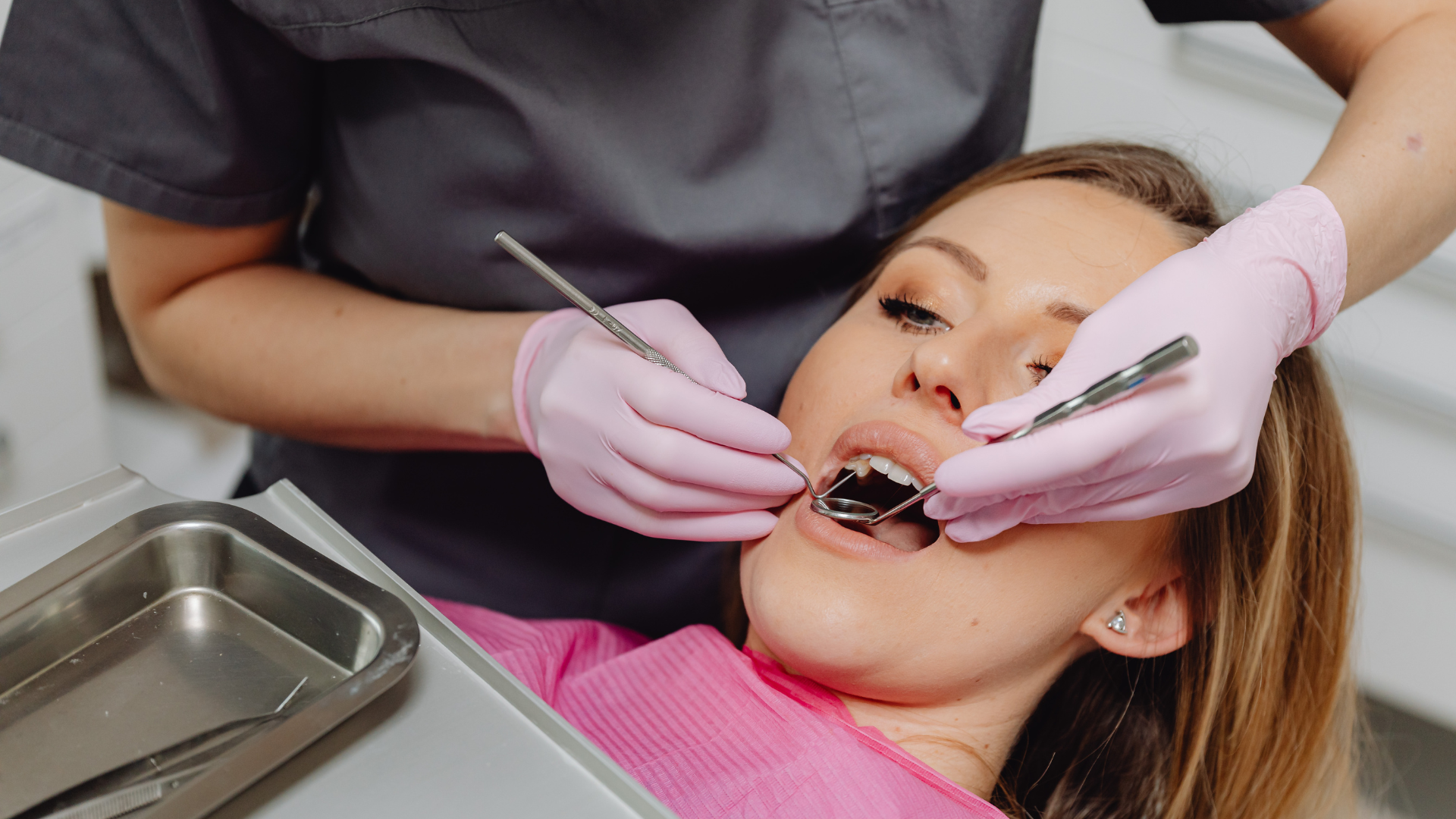How Long Does Numbing Last After Treatment?

Understanding Dental Numbing Agents
Types of Local Anesthetics Used in Dentistry
In the realm of dentistry, several local anesthetics are commonly employed to ensure patients remain comfortable during procedures. Lidocaine is perhaps the most well-known and widely used due to its effectiveness and relatively short duration of action.
Other anesthetics include:
- Articaine, favored for its enhanced potency and ability to diffuse through tissues.
- Mepivacaine, which is often used when vasoconstrictors are contraindicated.
- Bupivacaine, known for its prolonged numbing effect, making it suitable for extensive dental work.
Each of these agents has a unique onset time and duration of numbness, which can be influenced by various factors such as dosage, injection site, and individual patient characteristics.
The choice of anesthetic is a critical decision that dentists make based on the procedure's complexity, the expected duration, and the patient's medical history.
How Numbing Agents Work
Dental numbing agents, commonly known as local anesthetics, work by temporarily blocking nerve signals in the body. When injected near a nerve in the mouth, they prevent the nerve from sending pain signals to the brain. This results in a loss of sensation in the targeted area, allowing dentists to perform procedures without causing discomfort.
Local anesthetics are composed of several chemical components that work together to achieve numbness:
- Lidocaine: The most commonly used dental anesthetic, known for its quick onset and effective numbing.
- Articaine: Often used for more invasive procedures due to its potent and longer-lasting effects.
- Mepivacaine: Preferred for shorter procedures as it has a rapid onset but a shorter duration of action.
- Bupivacaine: Used for procedures requiring extended periods of numbness due to its long-lasting effects.
The effectiveness of a numbing agent is not only determined by its chemical makeup but also by the precise technique used by the dentist during administration.
Once the effect of the anesthetic begins to wear off, the nerve fibers regain their ability to transmit signals, and sensation gradually returns to the area. The duration of numbness varies depending on the type of anesthetic used and individual patient factors.
Numbness After Tooth Extractions
Tooth extractions often require a more potent numbing agent due to the invasive nature of the procedure. The numbness from an extraction can last anywhere from a few hours to a full day, depending on various factors such as the type of anesthetic used and the individual's response to it.
The sensation of numbness is expected to diminish gradually, allowing for a return to normal sensation as the anesthetic wears off.
Patients should be aware of the following post-extraction sensations:
- Tingling as the numbness subsides
- Mild discomfort or soreness at the extraction site
- A temporary difficulty in speaking or eating
It's important to follow your dentist's aftercare instructions to ensure proper healing and to manage any discomfort during the period of numbness.
Numbness After Root Canal Treatments
Root canal treatments often require a more profound numbing due to the complexity and sensitivity of the procedure. The numbness from a root canal can last anywhere from 2 to 4 hours, depending on the type of anesthetic used and individual patient factors.
After a root canal, it's crucial to avoid chewing on the numb side of your mouth to prevent biting your cheek or tongue inadvertently.
Patients should be aware of the following post-treatment sensations:
- A tingling feeling as the numbness wears off
- Temporary difficulty in speaking clearly
- Mild discomfort once the anesthetic completely wears off
It's important to follow your dentist's aftercare instructions to ensure proper healing and to manage any discomfort effectively.
Managing Discomfort and Numbness Post-Dental Work
Tips for Eating and Drinking
After dental procedures, it's important to take certain precautions while eating and drinking to avoid discomfort and injury to the numb area. Avoid hot beverages and foods as you may not be able to gauge temperature properly, which can lead to burns. Stick to soft foods that require minimal chewing and avoid biting down on hard or crunchy items that could damage temporary fillings or the numb area.
- Start with liquids or soft foods like soup, yogurt, or applesauce.
- Chew on the side of your mouth that is not numb.
- Take small bites and eat slowly to prevent accidentally biting your cheek or tongue.
Be mindful of the numbness as it wears off; you may experience a tingling sensation as sensation returns to the area. This is normal, but if you notice any unusual symptoms or if the numbness persists, consult your dentist.
Caring for the Numb Area
After dental work, it's crucial to take proper care of the numb area to prevent injury and promote healing. Avoid chewing on the numb side of your mouth to prevent biting your cheek or tongue. It's also important to protect the area from extreme temperatures, as you might not feel pain from hot or cold, leading to burns or frostbite.
- Do not eat hard or crunchy foods that require significant chewing.
- Refrain from drinking very hot or cold beverages.
- Avoid using straws, as the suction can disturb healing sites, especially after extractions or surgery.
Be gentle when brushing your teeth around the numb area, and avoid flossing if it causes discomfort or bleeding. It's essential to maintain oral hygiene, but be cautious not to irritate the site of your recent dental work.
When to Contact Your Dentist
After receiving dental work, it's normal to experience some numbness. However, if the numbness persists for an unusually long time or you encounter any discomfort that seems out of the ordinary, it's important to contact your dentist. Children's dentistry Danforth experts advise that for children, any numbness lasting more than a few hours warrants a call to the dentist.
For adults, especially those who have undergone procedures at a cosmetic dentistry Toronto clinic, feeling sensations returning within 3 to 5 hours is typical. If you've visited a dental emergency clinic in Toronto and the numbness or pain is severe and immediate, do not hesitate to reach out for advice.
Remember, your dentist is your partner in oral health. If you're unsure about your symptoms or how you're feeling post-procedure, it's always better to err on the side of caution and make that call.
Here's a quick checklist of symptoms that should prompt you to contact your dentist:
- Unusual or prolonged numbness
- Severe pain or discomfort
- Signs of infection, such as swelling or pus
- Bleeding that doesn't subside
- Allergic reactions, such as hives or itching
Potential Side Effects and Complications
Common Reactions to Numbing Medications
After receiving numbing medications at the dentist, patients commonly experience certain reactions as the anesthetic takes effect and wears off. Mild side effects are generally not a cause for concern and are a normal part of the numbing process.
- Tingling sensations
- Minor swelling or puffiness
- A feeling of heaviness in the numbed tissues
- Temporary difficulty in speaking or controlling drool
It's important to avoid chewing on the numb side of your mouth to prevent accidental biting of the cheek or tongue, which can lead to further complications.
Most side effects are short-lived and will dissipate as the anesthetic wears off. However, if you notice any unusual or severe reactions, it's crucial to contact your dentist immediately.
Allergic Reactions and Sensitivities
While most patients tolerate dental numbing agents well, allergic reactions and sensitivities can occur. These reactions are rare but require immediate attention. Symptoms may include itching, redness, swelling, or difficulty breathing.
- Mild Allergic Reactions: Often managed with antihistamines.
- Severe Reactions: May necessitate emergency medical intervention.
Inform your dentist about any known allergies to medications prior to receiving numbing agents. A thorough medical history can help prevent adverse reactions.
Patients with sensitivities may experience less severe symptoms, such as localized irritation or a mild rash. In such cases, alternative numbing agents or premedication may be considered to minimize discomfort and ensure a safe dental experience.
Prolonged Numbness: When to Be Concerned
While most dental numbing agents wear off within a few hours, there are instances where numbness persists. If numbness lasts longer than 24 hours, it is crucial to contact your dentist as it may indicate a more serious issue.
Occasionally, prolonged numbness can be a side effect of the anesthetic or a symptom of nerve damage. It's important to monitor the situation and note any accompanying symptoms such as pain, tingling, or a complete lack of sensation.
Prolonged numbness should not be ignored, especially if it's accompanied by other changes in sensation or function.
Here are some signs that warrant immediate attention:
- Persistent numbness beyond the expected time frame
- Development of a rash or itching
- Difficulty with swallowing or speech
- Changes in bite or jaw movement
If you experience any of these symptoms, it's imperative to seek professional advice to prevent any long-term complications.




